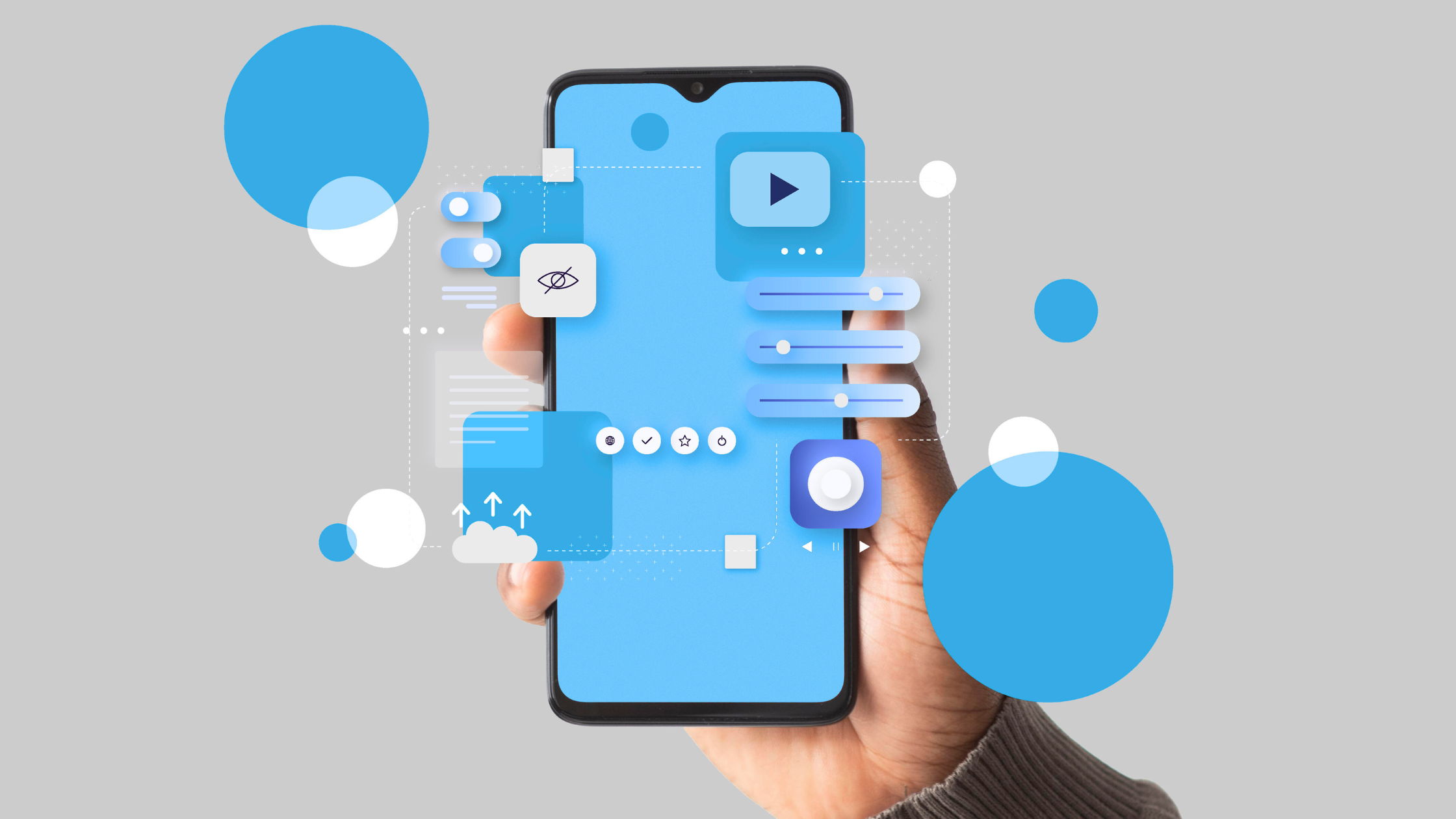AI Agents Are the Future of Mobile App Development
Think about it, suppose you open an app and it already knows what you need, suggests the right product, nudges the right workflow, and finishes a task for you without asking twenty questions. It would feel magical, wouldn’t it? Well, not really. That’s an AI agent at work, a tiny, dependable helper that lives inside your app and quietly makes it feel smart. That’s the kind of user experience people are willing to pay for (and recommend).
The Strategic Value of AI Agents in Mobile Apps
Apps used to be simple, just a few buttons, forms, and a bit of flair. Now users expect context in terms of their preferences, their schedule, and their last five interactions. AI agents have managed to fill this gap by processing language, managing tasks, and making decisions based on signals you couldn’t reasonably collect and act on manually.
The wins are concrete with faster onboarding, better retention, fewer support tickets, and higher conversion rates. This is not just marketing talk, but the numbers behind those outcomes are real when the agent is built right.
How an AI Agent Actually Fits Into A Mobile App?
An agent isn’t a single monolith. It’s a small collection of services: a model that understands text or voice, a lightweight decision layer that applies business rules, and connectors that talk to your backend (inventory, EHRs, shipment trackers). Put together, they become a capability: “recommend,” “summarise,” “automate this routine.”

A quick example in simple words, in retail, an agent can watch cart activity and offer coupon nudges when it detects hesitation. In healthcare, it summarises recent notes for a clinician before a consultation. In logistics, it triages delivery exceptions and drafts the right message to a driver. These are not sci-fi; they’re engineering patterns you can ship in months with a good team.
Generative AI – An Effective Tool To Leverage
Generative models let agents speak naturally, draft content, or even synthesise images on the fly.
But know that they’re brilliant at language, flaky on facts sometimes, and need guardrails. So a practical approach is hybrid, model suggestions plus rule-based checks and human-in-the-loop gates for high-risk domains like healthcare or government services.
Industry Snapshots (so you can picture it better)
-Media: Personalised episode summaries, instant content tagging, audience sentiment triage. Less busywork for editors; more time for creativity.
-Retail: Hyper-personal offers, voice commerce, automated returns handling that reduces friction.
-Healthcare: Smart intake forms, note-generation, and medication reminders, but always with audit trails.
-Government: Citizen-service agents that answer FAQs, fill forms, and route requests, freeing staff for complex cases.
-Logistics: Predictive rerouting, automated exception resolutions, and driver-assist prompts that cut delays.
Not every problem needs an agent, and that’s fine. Sometimes a well-crafted rule or a smarter UX is the right answer. An agent should solve a recurring, multi-step problem that benefits from context or language understanding. In short, don’t add an agent because it’s the latest shiny thing. Add it because you’ve got a real gap in speed, comprehension, or automation.
Understanding Cost vs. Value
Yes, building an agent costs more than a static feature. But evaluate it like this:
-What repetitive human time does it replace?
-And how much faster does it make a user task?

Metrics to watch: time-to-task-completion, reduction in support tickets, conversion uplift, and net promoter score change.
Often, one high-value agent proves its ROI in a single quarter when it discovers better retention or reduces operational load.
Quick Architecture Sketch (for the curious)
-Mobile UI layer: Compact UI to capture intent (voice/text).
-Edge client: Lightweight preprocessing, caching, and local rules.
-Inference layer: Hosted model endpoints (for latency-sensitive tasks) or serverless calls (for less urgent tasks).
-Orchestration: Business rules and logging for auditability.
-Feedback Loop: Telemetry and human review to retrain models.
That structure keeps apps responsive and maintainable, and yes, latency is a first-class citizen here.
Hire an AI Engineer or an AI Expert/ Developer

If you’re looking to hire an AI Engineer or contract an AI Expert/ Developer, focus on these things:
-Portfolio of shipped mobile features (not just experiments).
-Experience integrating ML models with mobile SDKs and cloud inference endpoints.
-Data hygiene and privacy experience matter, especially if you handle health or government data.
-Plan a simple demo to have minimal working agents, so that value can be seen in 4–8 weeks.
-Think about how they’ll monitor model drift and user feedback.
Need help choosing a partner?
Look for companies that combine product engineering with AI know-how — ones that talk about app performance as much as model accuracy. If you want a starting point, check out an AI Development company in US for product-led examples and case studies.
A practical hiring checklist
Thinking “I should Hire an AI Engineer”? Here’s a quick checklist you can paste into a hiring brief:
-Past mobile agent work (links to apps or demos).
-Experience with on-device ML or low-latency cloud inference.
-Familiarity with privacy laws relevant to your sector (HIPAA, GDPR, etc.).
-A plan for monitoring, rollbacks, and versioned models.
-Clear handoff plan: docs, runbooks, and training for your ops team.
Common pitfalls (so you can avoid them)
-Treating the agent as a finished product instead of an iterative feature.
-Skipping user testing in different contexts and accents (voice agents suffer here).
-Ignoring telemetry, if it’s not measured, it won’t improve.
-Over-automating where human judgment is still essential.
In Conclusion, Here’s What To Do Next
You don’t need to rebuild everything. Start small and pick one repetitive flow that eats time (support, approvals, checkout). Prototype an agent that helps, measure its effect, then scale. Hire an AI Expert/ Developer who speaks product and ops, not just model math.
Curious teams often start by partnering with a Mobile App Development Company that already blends AI and product engineering, because that combo shortens the path from idea to impact, someone like AlignMinds.
If you want a practical next step, consider a short discovery sprint with us at AlignMinds, a 2–to 4-week engagement that surfaces real use cases and a cost plan. AlignMinds is a firm offering AI and mobile product engineering services in the US and beyond.
But does that mean agents are going to replace developers? Not really. They’ll let developers ship bolder features faster, and free teams to focus on the stuff humans do best: empathy, judgment, and creative problem solving. Sounds fair, doesn’t it?
Comments
Post a Comment